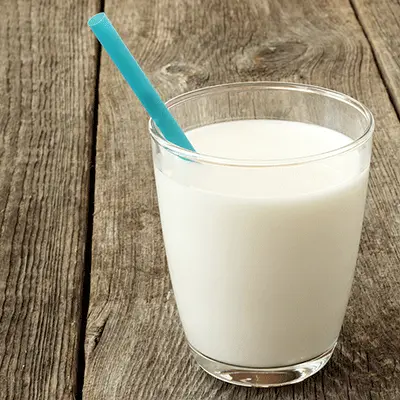What's the Difference Between Full-Fat and Low-Fat Dairy?
In this series, Dr. Greg Miller, Ph.D., FACN, answers questions received from the health and wellness community.
Question: What’s the difference between full-fat and low-fat dairy?
Answer: Overall dietary guidance for a healthy population recommends choosing lower fat versions of milk, yogurt and cheese over full-fat dairy foods. You can feel good knowing that all cow’s milk contains the same 13 essential nutrients, and is a good or excellent source of protein, calcium, vitamins A and D, vitamin B12, riboflavin, niacin, phosphorus, pantothenic acid, zinc, selenium, iodine and potassium.
Difference Between Low-Fat Dairy vs Full-Fat Dairy
The primary difference between whole and fat-free milk is the amount of fat and calories. Whole milk contains 8 grams of total fat per cup and 150 calories, while a cup of fat-free milk contains almost no fat and about 80 calories.
Federal dietary guidance recommends low-fat and fat-free dairy foods and also recommends limiting saturated fat intake to no more than 10 percent of daily calories. That means moderate amounts of full-fat dairy can be part of an overall healthy eating plan, as long as you balance your intake with other foods containing saturated fat.
So, you can enjoy whole milk – which contains 4.5 grams of saturated fat per 8-ounce serving – on your morning cereal or use it in a favorite recipe, as long as you keep your overall calorie and saturated fat allowance in balance. If you’re following a 2,000-calorie eating plan, that means consuming no more than 22 grams of saturated fat per day.
Dairy's Role in a Healthy Eating Pattern
In general, it’s important to consider the complete nutrient package of the foods you eat and how they fit into a healthy eating pattern. A good rule of thumb is to choose foods rich in nutrients, rather than foods that may be high in calories but low in nutrients. Dairy foods such as milk make a significant nutrient contribution to healthy eating patterns. These include nutrients most Americans don’t get enough of, such as calcium and vitamin D.
In addition, emerging research shows that fat-containing dairy foods may have a different effect on cardiovascular health than other food sources of saturated fat. In addition, observational evidence over the last ten years or so indicates that saturated fat may not be directly associated with cardiovascular disease risk. The results are fascinating, but we need more research to help us fully understand these relationships.
Check out this science brief for more information about full-fat dairy foods and health.















